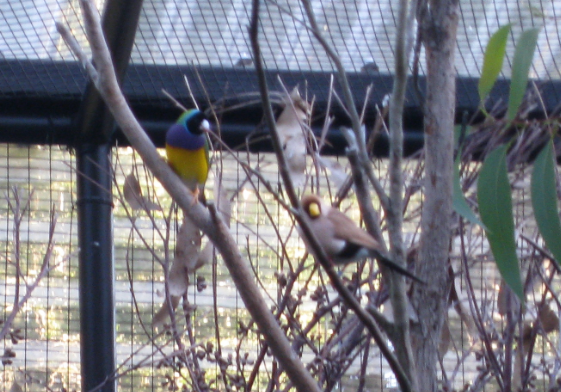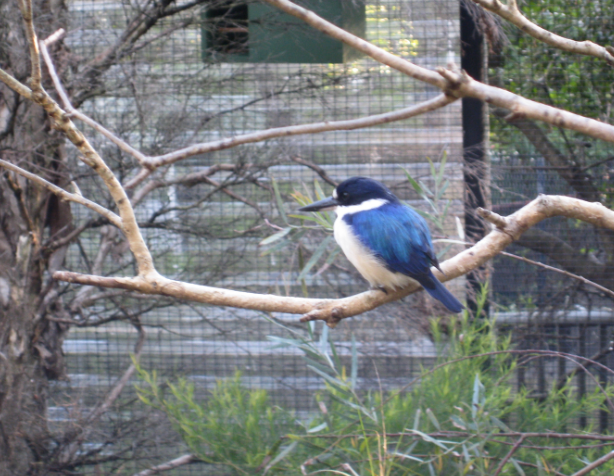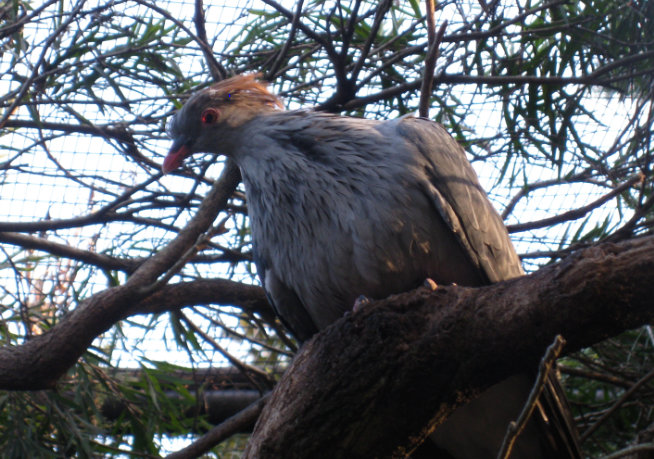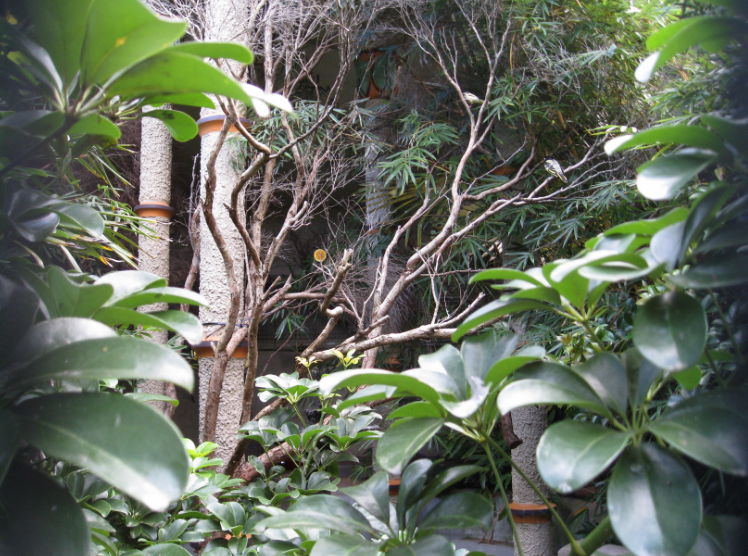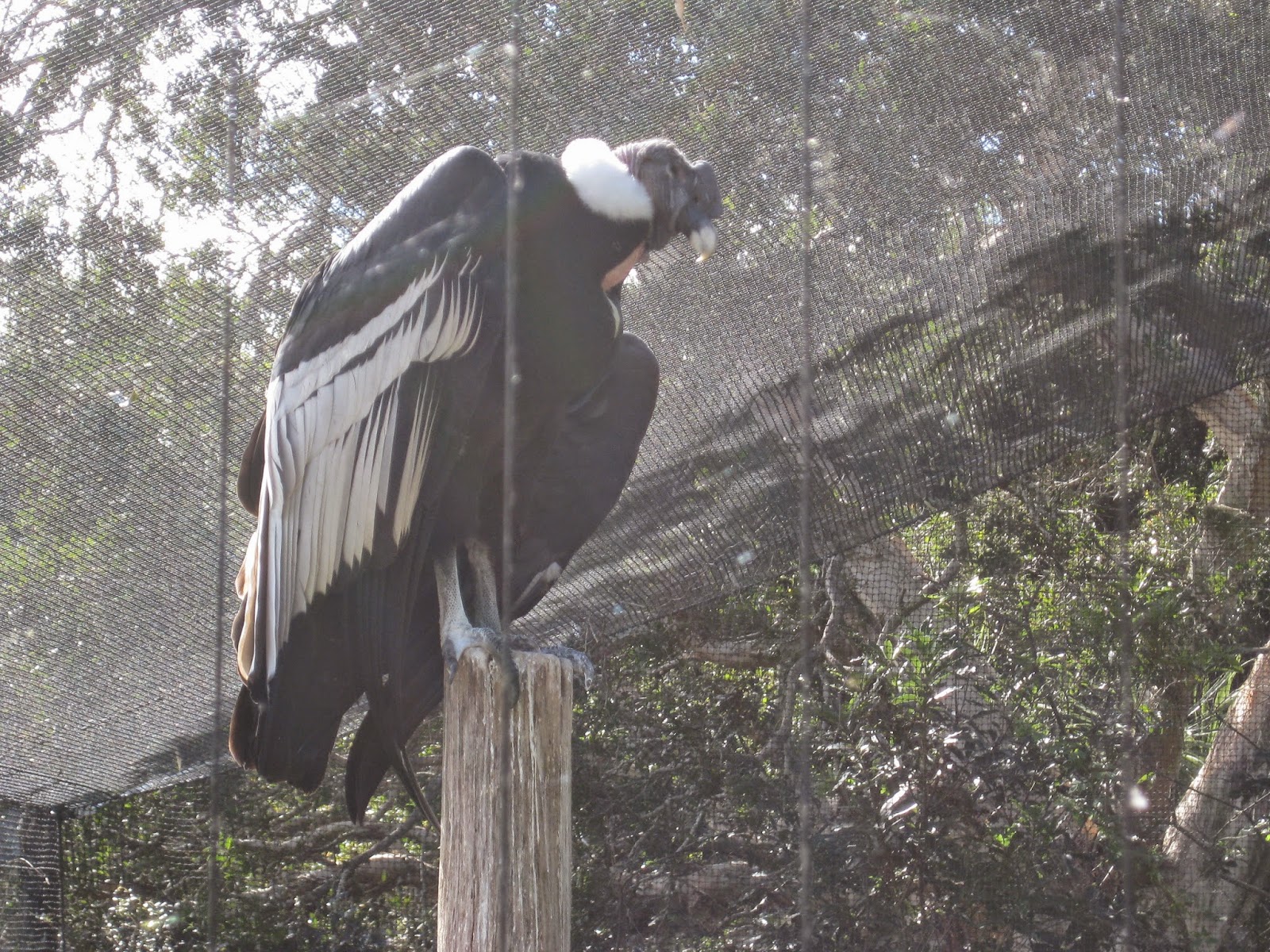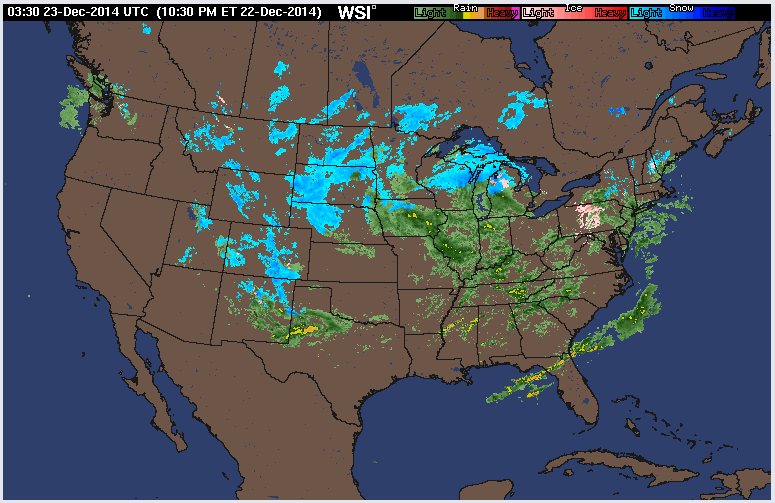We've so far avoided Taronga Zoo because it's a major tourist trap, but it's actually one of the best zoos I've been to (rivaling the San Diego and Houston Zoos) and a great way for locals to spend a cool Saturday in autumn. I would have visited the zoo much sooner if I'd known how many aviaries (and bird species) they have! One website claims they have 160 bird species in the zoo. Considering many of these are not on display all the time, I'm happy to have seen half (80 species in one afternoon!). And after 5 hours, we still didn't see and do everything the zoo has to offer. We'll definitely be back - to see the animals we didn't get to, do the ropes course, watch the bird show (we missed it), soak in the amazing views of the city and harbour, have an animal "encounter," or do the overnight "Roar and Snore."
View of the city and harbour from the Taronga Zoo bird theatre
But on to the birds...
The zoo has five separate, walk-through aviaries/areas where visitors are completely surrounded by birds and other wildlife, at least 18 cages or pens containing birds, and many open areas (like ponds and tree-tops) where native birds congregate.
I can't possibly describe our encounters with all 80 species, but here are a few highlights.
Wetlands Aviary
Glossy ibis walking among the bamboo
Royal spoonbill playing with coy fish
Pied heron standing on a mossy rock
Cattle egret on the roof of the entrance to the Wetlands Aviary
Species seen: Cattle egret, Dollarbird, Glossy ibis, Java sparrow, Mandarin duck, Metallic starling, Pied heron, Pied imperial pigeon, Royal spoonbill, Wandering whistling duck, Yellow figbird.
Seal walk
Little penguins
Roosting Australian pelicans
Species seen: Australian pelican, Little penguin
Rainforest trail
Nicobar pigeon (Southeast Asia), Palm Aviary
Red Lory (Indonesia), Palm Aviary
Golden pheasant (China), Palm Aviary
White-bibbed ground dove (New Guinea), Palm Aviary
Species seen: Brown cuckoo-dove, Egyptian goose, Golden pheasant, King quail, Luzon bleeding-heart pigeon, Nicobar pigeon, Noisy pitta, Red jungle-fowl, Red lory, Red-whiskered bulbul, Superb fruit dove, Victoria crowned pigeon, White-bibbed ground dove.
Big cats trail
Majestic lions pose for a picture
Gorilla family with baby riding on mama's back
Bird species seen: Ruddy shelduck
Australian walkabout
Tasmanian devil pretending to be roadkill
A male (right) and female (left) Zebra finch (Aviary near red kangaroos)
Malleefowl (Aviary near red kangaroos)
Budgerigar (Aviary near red kangaroos)
Eastern rosella (Aviary near red kangaroos)
Red kangaroos
Glossy black cockatoo (Blue Mountains Bushwalk Aviary)
Diamond firetail (Blue Mountains Bushwalk Aviary)
Southern cassowary
Emu
Regent bowerbird (Australian Rainforest Aviary)
Noisy Pitta (Australian Rainforest Aviary)
Gouldian and Masked finch (Bush birds enclosure)
Forest Kingfisher (Bush birds enclosure)
Gouldian Finch (Bush birds enclosure)
Black-winged stilt (Bush birds enclosure)
Crimson finch (Bush birds enclosure)
Banded lapwing (Bush birds enclosure)
Yellow figbird (Bush birds enclosure)
Topknot pigeon (Bush birds enclosure)
Red-tailed black cockatoo (Cockatoo enclosure)
Sleeping koala
Bird species seen: Australian bush turkey, Australian king parrot, Australian pelican, Australian shelduck, Banded lapwing, Black-winged stilt, Brown cuckoo-dove, Brush bronzewing, Budgerigar, Buff-banded rail, Cape barren goose, Chestnut-breasted Mannikin, Crested pigeon, Crimson finch, Diamond firetail, Dollarbird, Eastern rosella, Eclectus parrot, Emerald dove, Emu, Forest kingfisher, Gouldian finch, Green pygmy-goose, King quail, Kookaburra, Little lorikeet, Malleefowl, Masked finch, Masked lapwing, Noisy pitta, Peaceful dove, Pheasant coucal, Plumed whistling-duck, Red-tailed black cockatoo, Regent bowerbird, Rose-crowned fruit dove, Satin bowerbird, Scaly-breasted lorikeet, Southern cassowary, Striped honeyeater, Superb fruit dove, Superb parrot, Tawny frogmouth, Topknot pigeon, Turquoise parrot, Variegated fairy wren, White-browed wood-swallow, White-headed pigeon, Yellow figbird, Yellow-tailed black cockatoo, Zebra finch,
Other highlights
Spotting a Nanking Night Heron near the crocodile enclosure. It's not listed in the zoo's animal list and was probably just passing through!
Watching a feeding in the Palm Aviary
Spotting this unlisted bird in the aviary near the Red Kangaroos. Looks more like a rare Dusky or Black Grasswren than a striated grasswren.
Spotting these King parrots in the wild near the Australian Rainforest Aviary. You don't usually see these guys in the city. Could they be a population of zoo escapees, or were they just passing through?
Watching the Regent Honeyeaters...
...in the Historic Moore Park aviary
Marvelling at the Andean Condors
(Disclaimer: I do not intend in this post to advocate any particular views about the treatments of animals in zoos.)


























